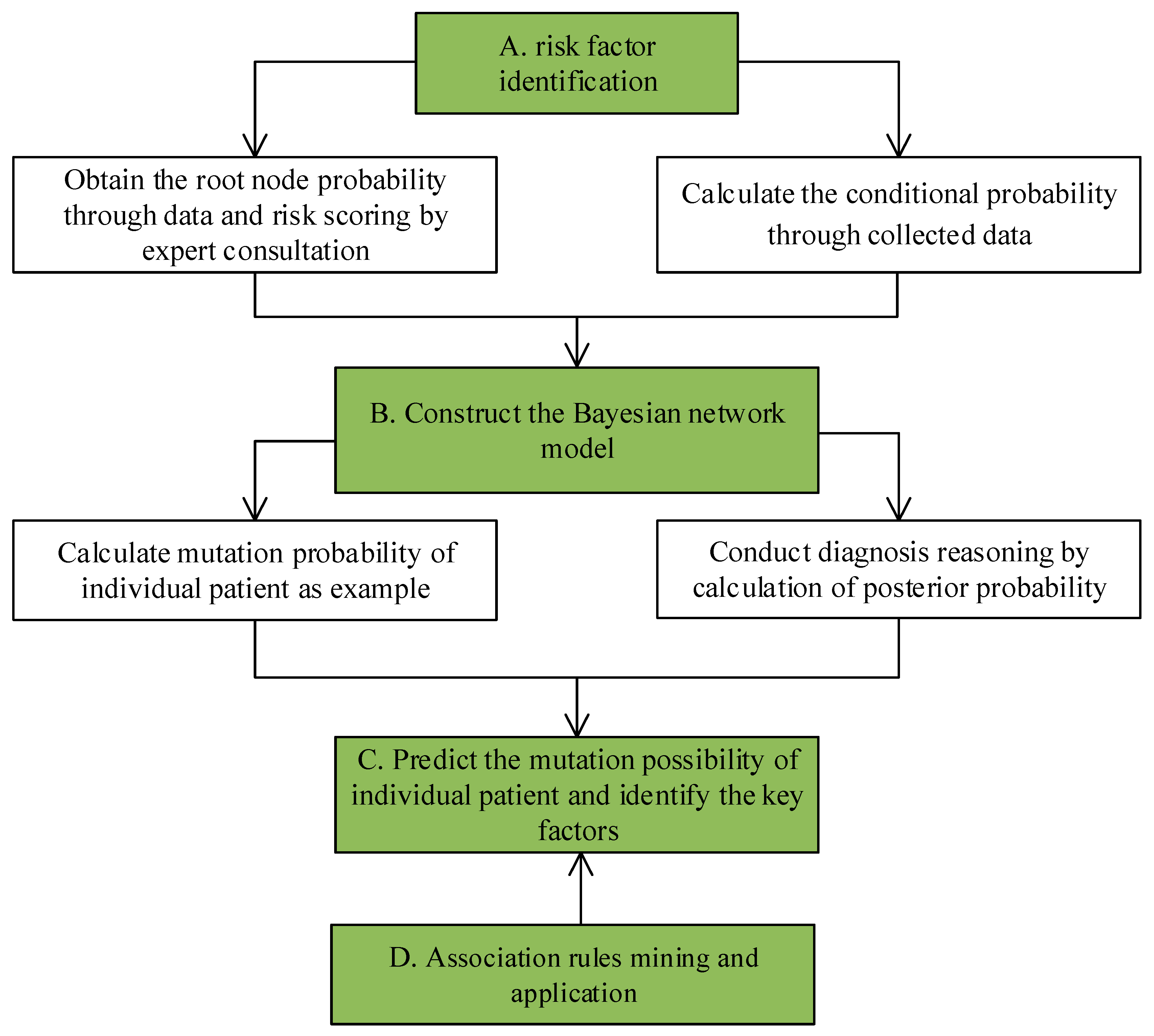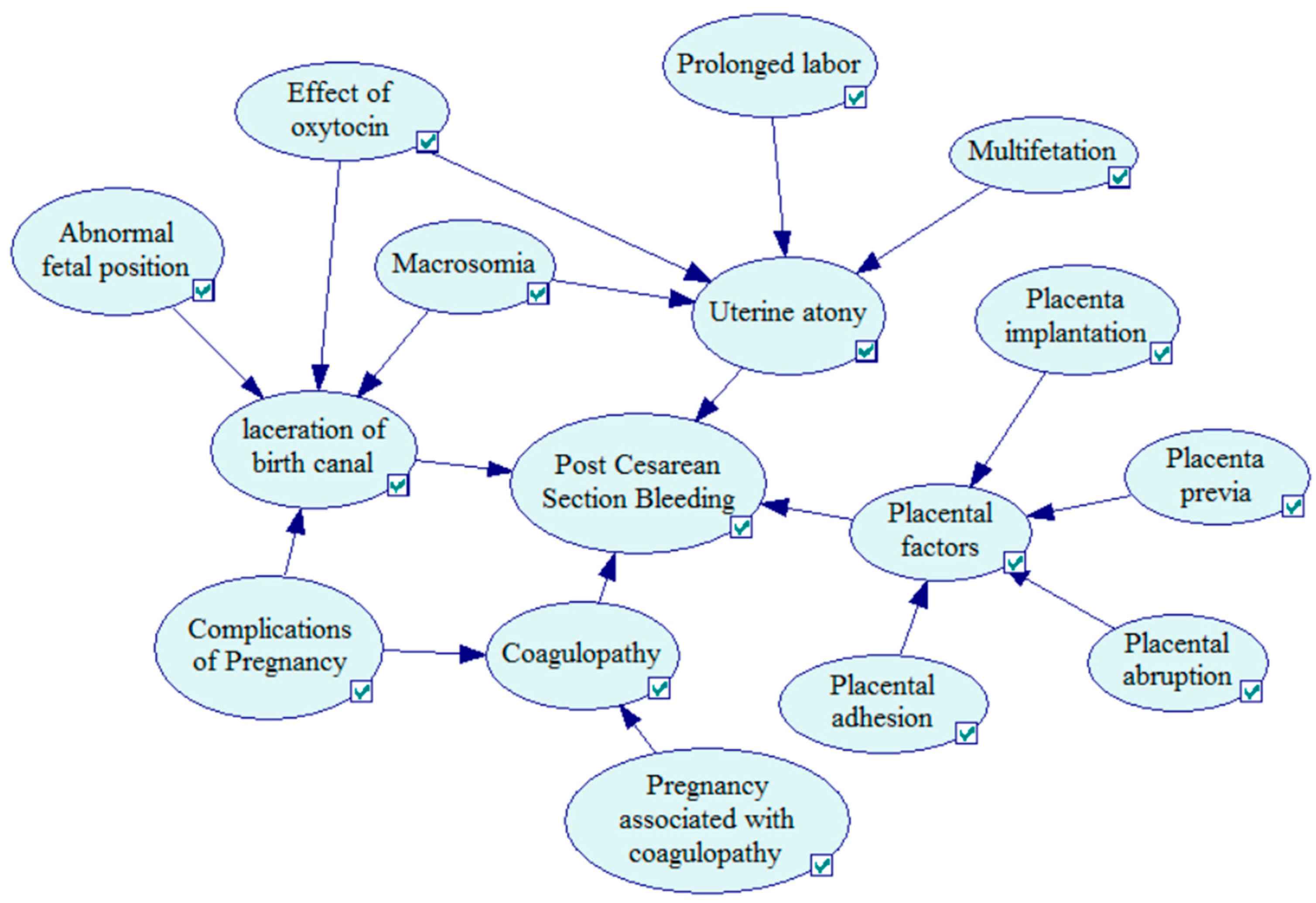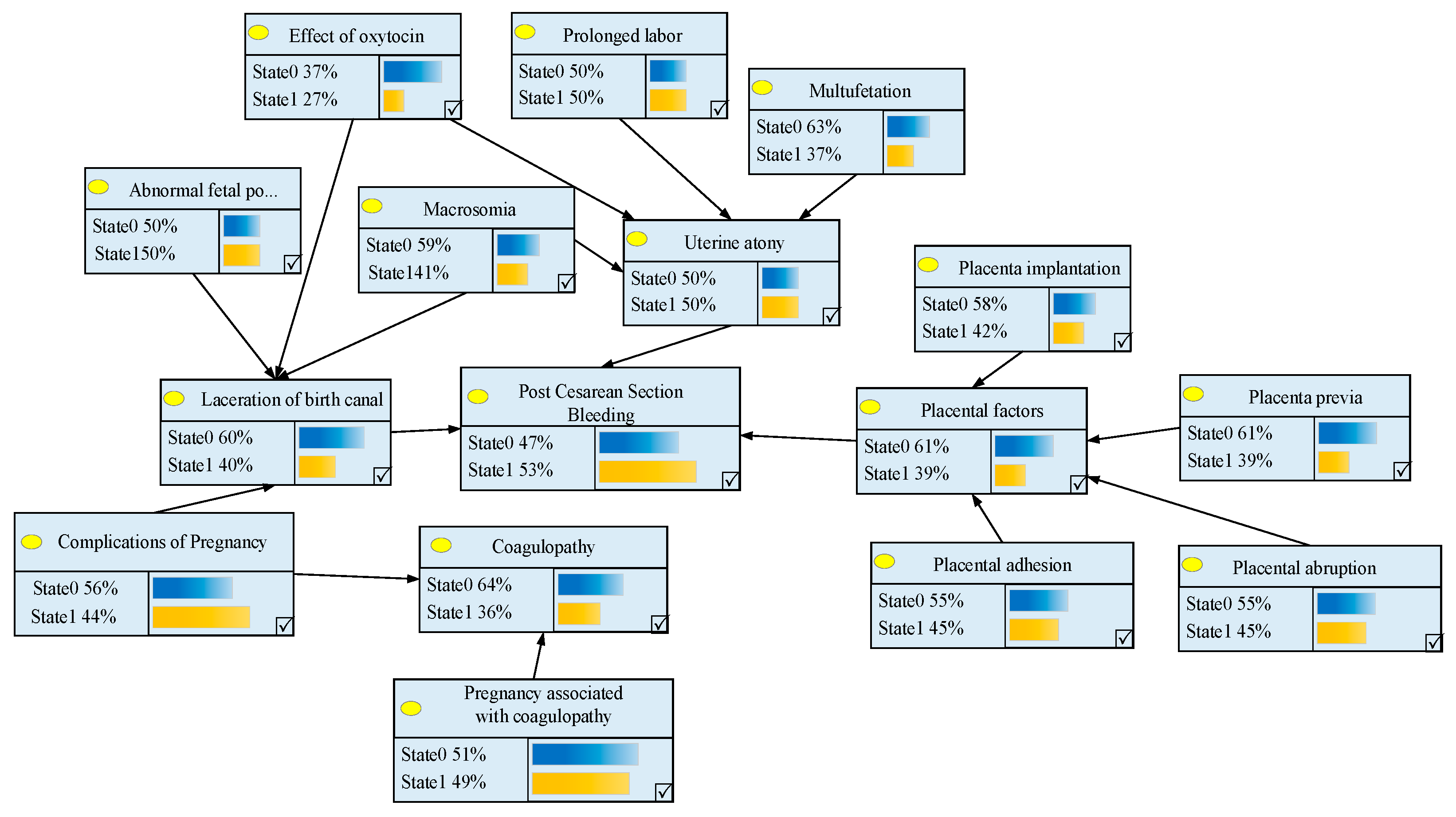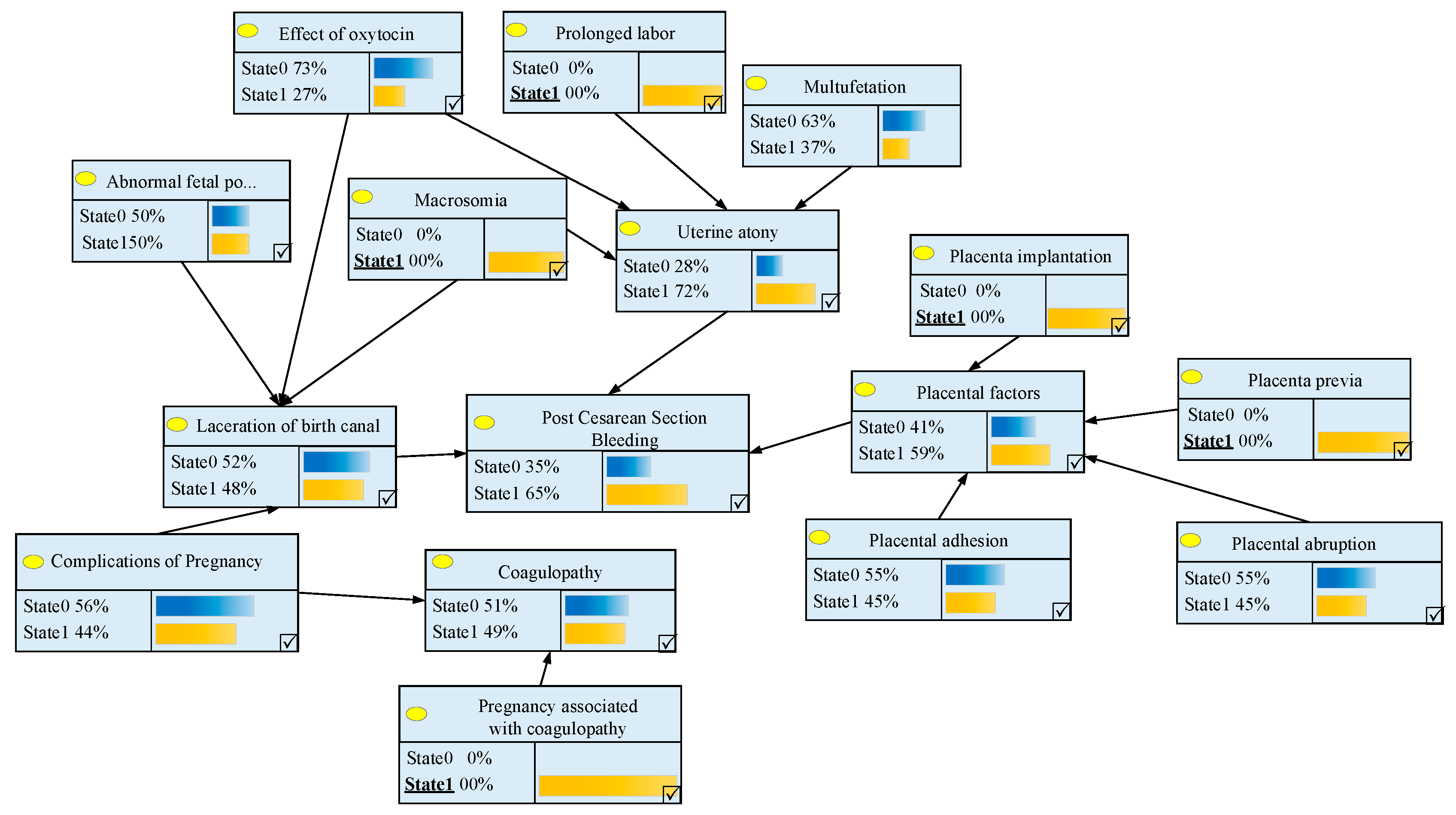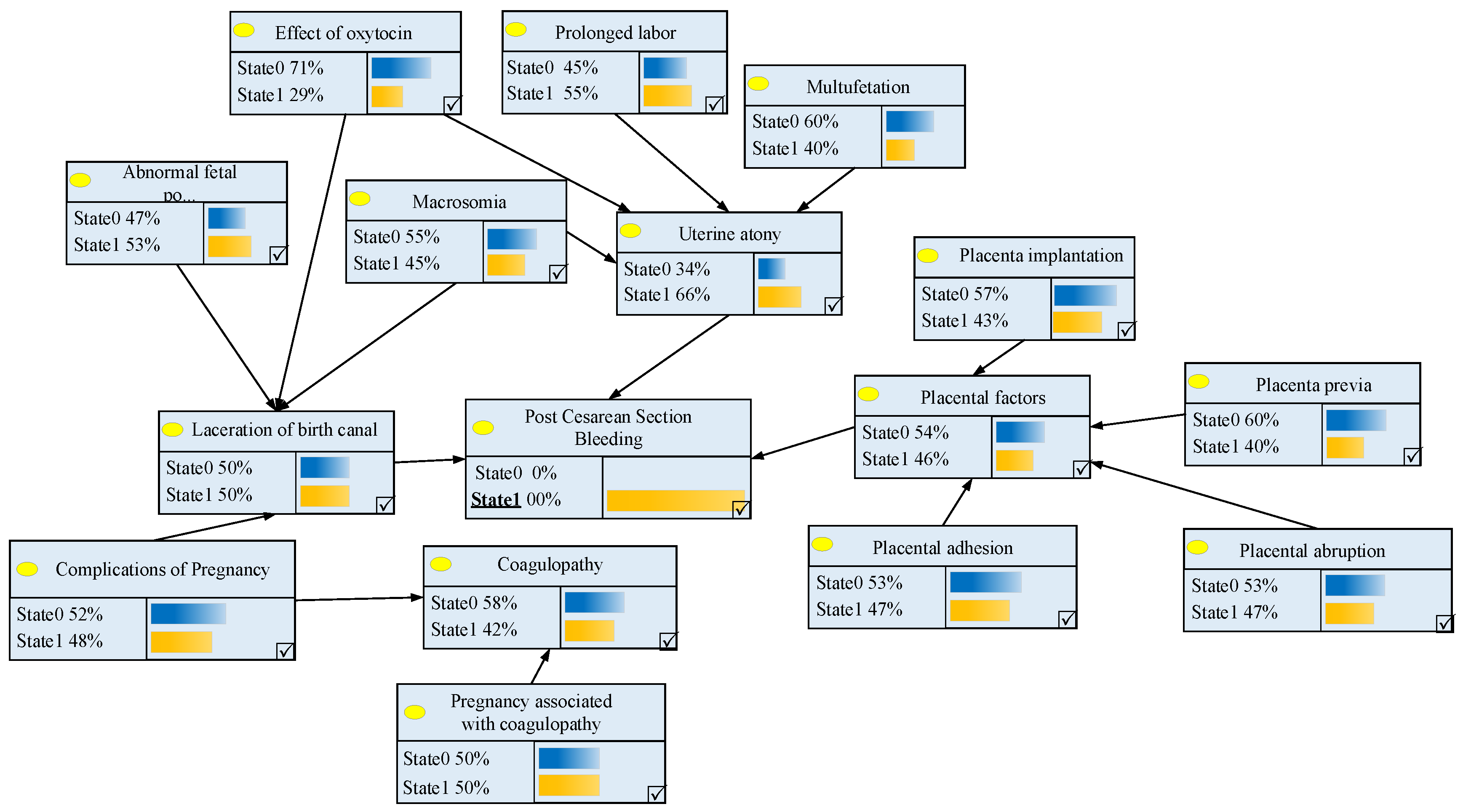1. Introduction
The Ministry of Health of the People’s Republic of China (MOH) issued documents in January 2010 to formally implement clinical pathways and set up a corresponding standard system. As a standardized medical quality management system, a clinical pathway is a process of diagnosis and treatment for specific diseases according to the three principles of advanced arrangement, independent setting, and the PDCA (plan–do–check–act) cycle [
1,
2], which plays an important role in shortening the process of diagnosis and treatment, regulating medical behaviors, ensuring medical safety, reducing treatment and service costs, and improving medical service quality and patient satisfaction [
3,
4].
In recent years, studies on the establishment and standardization of clinical pathway management are increasing. With the development of data mining techniques in the medical field, more scholars have begun to use various data mining algorithms to provide new approaches for the establishment of clinical pathways. Fundamentally, it is essential to identify what medical behaviors are indispensable and the amount of time each of these medical behaviors require [
5,
6]. In order to provide accurate quantitative timing information for critical medical behaviors, Huang et al. [
7,
8] developed a new approach of clinical pathway process mining that analyzed data by querying sets of clinical pathway information based on specific clinical workflow behavior logs. This method not only succeeded in finding the order in which key medical behaviors are implemented, but also provided a quantified time series for each behavior. Tsumoto et al. [
9] proposed a clinical pathway construction method based on double clustering (attribute clustering and sample clustering) analysis, of which the actual operating results were similar to those of medical experts who manually recorded the clinical pathway.
Clinical pathway variance is a significant problem to be solved [
10]. Some scholars have focused on clinical pathway variance analysis. Clinical pathway variance can be classified according to the source of variance [
11], and the key problems related to clinical pathway variance analysis have been summarized [
12]. Ye et al. proposed a framework for semantics-based clinical pathway and variance management to enable the computerized implementation of clinical pathways [
13], and proposed a hybrid exception handling approach based on a generalized fuzzy event–condition–action rule and a typed fuzzy Petri net extended by process knowledge [
14]. Additionally, Ye et al. [
15] proposed an ontology-based approach of modeling clinical pathway workflows. The action research framework for clinical pathways was proposed, which was progressively modified to suit clinical environments [
16]. Significant predictive factors of clinical pathway variance include complications and an abnormal body mass index [
17]. The growing use of clinical pathways by nurses and midwives was studied in [
18], and the authors concluded that clinical pathways may have significant impacts on nursing and midwifery as professions.
We conducted a model to deal with variance monitoring and handling for clinical pathway management [
19], and a knowledge extraction algorithm and a hybrid learning algorithm (for variance) were proposed [
20,
21]. Niemeijer et al. [
22] used the Six Sigma technique to strengthen the variance analysis of elderly hip-fracture clinical pathways. Specifically, the authors designed a retrospective, prospective and non-randomized controlled trial to identify and intervene variances that lead to prolonged hospitalization in elderly patients with hip fractures.
To construct a reasonable Bayesian network for predicting cesarean section clinical pathway variance, immediate causes of postpartum hemorrhage need to be analyzed. Scholars have adopted a retrospective analysis method by which to investigate and summarize the risk factors resulting in postpartum hemorrhage in cesarean section, and concluded that uterine inertia, placental related factors, birth canal injury, and coagulopathy are the main risk factors [
23,
24]. Relevant experts also agree with this opinion, and hence the above four reasons are taken as parent nodes in the Bayesian network.
By studying and summarizing previous researches, we found that most of the studies on clinical pathway variance were organized by retrospective investigation and used the regression analysis method. Some literature has put forward methods of data mining and mechanisms of variance handling. For the Bayesian network, however, the design in the prediction of clinical path variance is fuzzy. This paper collects medical data regarding cesarean section clinical pathways from the Maternal and Child Health Hospital in Shanghai and performs data preprocessing. Ultimately, an integrated data mining method was used to analyze the variance of postpartum hemorrhage in the cesarean section clinical pathway.
The remainder of the article is organized as follows. In
Section 2, the specific methods are presented. The results and outcomes are provided in detail in
Section 3. In
Section 4, some discussions are mentioned. Finally,
Section 5 provides the conclusions and directions for future research.
4. Discussion
4.1. The Meaning of the Prediction of an Individual Patient’s Risk of Variance
As is shown in
Figure 4, the probability of postpartum hemorrhage is remarkably higher when gravidas have the specific symptoms listed above, which proves that the Bayesian network model can be used to predict the risk factors of individual patients. The risk prediction method presented in this paper can provide a means for medical providers to carry out risk assessment based on the different clinical features of pregnant women. Medical institutions could conduct a probability prediction of cesarean section for gravidas, while providing references for the clinical pathway processes and the timely responses of medical treatment methods.
4.2. The Significance of Identifying the Critical Risk Factors
To sum up, uterine atony is the leading cause of postpartum hemorrhage. Among the factors leading to uterine atony, prolonged labor is dominant. Analysis of key risk factors of postpartum hemorrhage after cesarean section is helpful for medical institutions to be able to take actions when confronted with certain situations, and to pay more attention to the causal factors behind these situations. Medical personnel who participate in clinical nursing of cesarean sections should pay more attention to the high-risk factors in the pathways mentioned in this paper so that they can improve clinical pathways. Further, this would allow them to observe the state of illness and prevent variance according to the constant physiological and psychological indexes that occur during the operational process. Controlling labor time can effectively reduce the occurrence of postpartum hemorrhage after cesarean section and improve the safety of gravidas. This paper provides some useful suggestions for medical providers in China by which to improve the medical service for cesarean section and prevent postpartum hemorrhage in advance.
4.3. The Application of Association Rules in Postpartum Hemorrhage Treatment
Through the analysis of
Table 6 and
Table 7, the following conclusions can be drawn intuitively.
Multi-factor rules with a higher degree of support all contain the factor uterine atony, and the confidence values of these rules are relatively high. Therefore, it can be seen from another point of view that uterine atony is the key factor causing postpartum hemorrhage.
The data in the table on postpartum hemorrhage of double-factor association rules indicate that if a gravida is in the situation where abnormal fetal position and uterine atony both occur during the surgery, the probability that she will have postpartum hemorrhage is greatest (the credibility of this rule is 80%). Therefore, the following advice is proposed for medical institutions. If abnormal fetal position is found in the preoperative examination, more attention should be paid to preventing the occurrence of uterine atony during surgery. Additionally, the amount of oxytocin and the length of labor time should be controlled strictly in case the gravida is in danger of postpartum hemorrhage.
Although the general degree of support for rules obtained through the analysis of triple-factor association rules was particularly low, it has a superior degree of confidence and promotion. The confidence was 1 in situations of postpartum hemorrhage where soft birth canal damage, abnormal fetal position, and uterine atony occurred at the same time. This indicates that when these three risk factors occur at the same time, the probability of sudden postpartum hemorrhage is 100%. The other two rules offer a similar conclusion, so if a gravida has three or more risk factors, her safety will be greatly threatened. If medical institutions have detected two of the risk factors before surgery, it is necessary to exclude the threats that can be treated and dealt with in advance, and thus reduce the risk of path change in gravidas.
Through the analysis of
Table 8 and
Table 9, the following conclusions can be derived.
- (1)
When gravidas show the phenomenon of uterine atony, the main treatment methods are anti-inflammatory treatment with cefotiam, anti-inflammatory oxytocin and fluid support therapy, and massaging the uterus and injecting carbetocin to enhance uterine contraction. The support degree of cefotiam treatment was the highest of the rules, indicating that it is mostly used when treating postpartum hemorrhage. Thus, it can be suggested that when gravidas are faced with That’s OK postpartum hemorrhage caused by uterine atony, giving cefotiam treatment is the best choice to promote their contraction capacity and inhibit the occurrence of postpartum hemorrhage.
- (2)
There are generally three postpartum hemorrhage treatment methods mentioned in the mined rules in
Table 8: anti-inflammatory treatment with cefotiam, anti-inflammatory oxytocin, fluid support therapy, and massaging the uterus and injecting carbetocin. It has been proven that the main ways for big medical institutions to deal with postpartum hemorrhage after cesarean section are these three treatments. If gravidas have postpartum hemorrhage due to the combined effects of soft birth canal injury, abnormal fetal position, and uterine atony, the above three methods should be considered foremost to treat patients in time.
- (3)
In
Table 9, a rule with a confidence rate of 1 represents the same solution used in the collection of data in medical institutions for the unification of certain clinical features. For example, when gravidas have postpartum hemorrhage because of anemia, uterine atony, or liver damage due to pregnancy, medical staff can employ ceftazidime for anti-inflammatory treatment. When gravidas have the problem of placental abruption, carboprost tromethamine injection is a feasible method for anti-inflammatory treatment. Because these rules have a high degree of confidence, it can be inferred that that they are the most effective solutions for treating postpartum hemorrhage caused by this pathogeny. This finding could be of great assistance to medical institutions in developing countermeasures for postpartum hemorrhage treatment.
5. Conclusions
Under the background of relatively weak management of variance, this paper used data mining methods to analyze postpartum hemorrhage after cesarean section with variance in the clinical pathway. Moreover, we established a Bayesian network model to analyze the risk factors of postpartum hemorrhage and by mining association rules we proposed corresponding solutions for postpartum hemorrhage resulting from different causes. The major conclusions are drawn as follows.
Firstly, by classifying different causes of postpartum hemorrhage after cesarean section, we divided the risk factors into primary and secondary risk factors. The four primary factors can directly affect the probability of postpartum hemorrhage after cesarean section, and the secondary factors can affect the primary factors. We next established the Bayesian network model corresponding to the risk factors, and calculated the probability of each node in the network. The probability of postpartum hemorrhage after cesarean section in general is 53%, implying that postpartum hemorrhage is a relatively high risk factor of clinical pathway variance. Further, postpartum hemorrhage is a main cause of death in gravidas during cesarean sections in China.
Secondly, by calculating the posterior probability of each node in the Bayesian network, we discovered the key factors that affect postpartum hemorrhage after a cesarean section. In this study, we sorted the posterior probability to obtain the key factors in the primary and secondary risk factors (i.e., uterine atony and prolonged labor) that put forward the most important monitoring indices when implementing the pathways for medical institutions.
Thirdly, the rules regarding clinical features associated with the management of postpartum hemorrhage during a cesarean section were obtained. This paper provides corresponding solutions to different causes of postpartum hemorrhage, and offers suggestions for medical institutions to improve the efficiency of variance treatment.
The data mining method used in this paper is only a preliminary attempt [
36,
37,
38]. In addition, the cognition of the clinical pathway of cesarean sections is not complete. Therefore, it is hard to consider all aspects in the progression of the disease. In the future, some aspects need to be improved. First, the sample size of the clinical pathway collected in this paper could be increased, as obtaining more data samples and improving the accuracy of data mining analysis are important directions for future research. Second, this study only investigated single diseases that occur during cesarean section. In the future, data mining methods could be used to study more diseases and the variance handling of clinical pathways in various cases.
